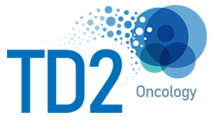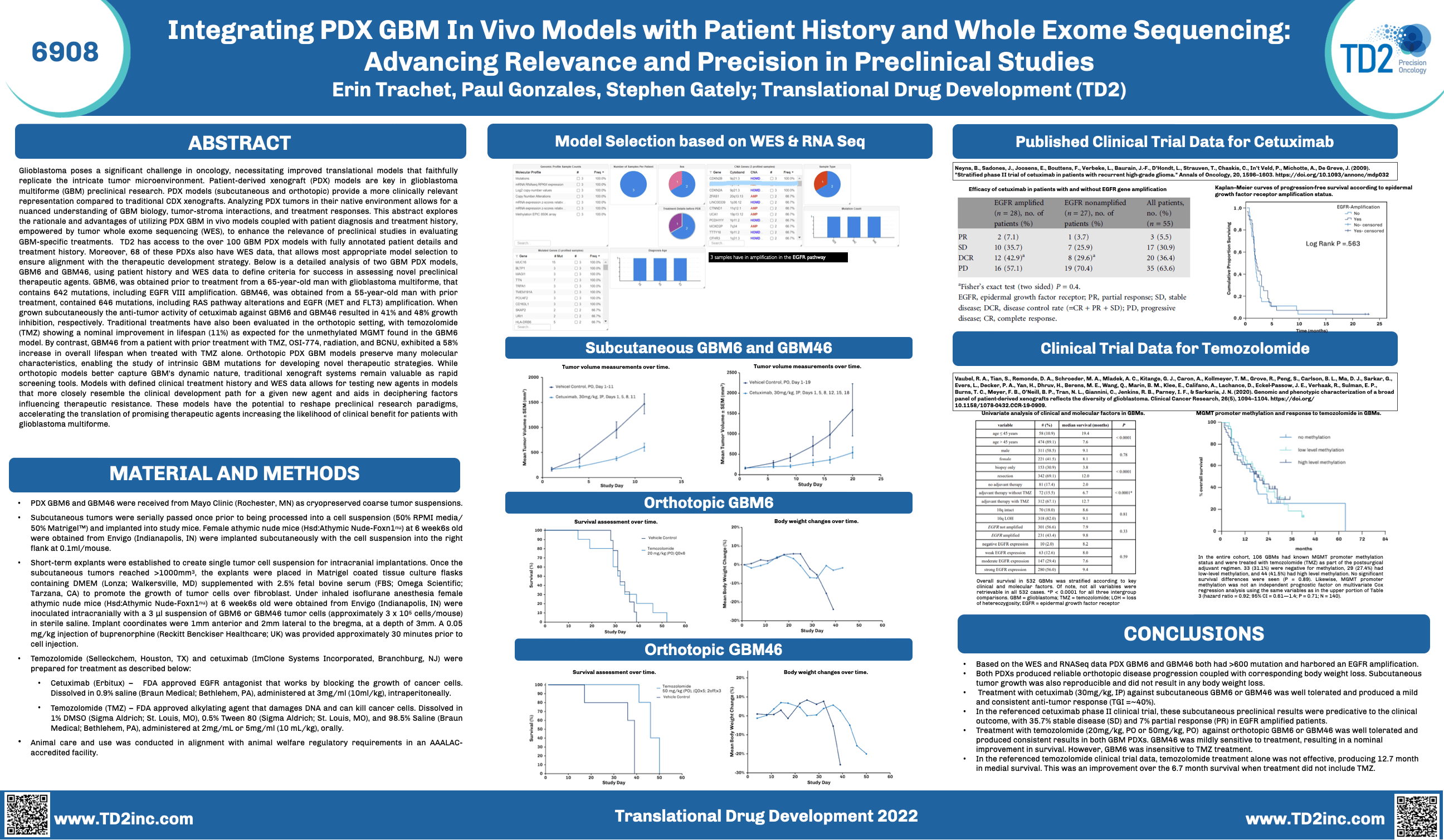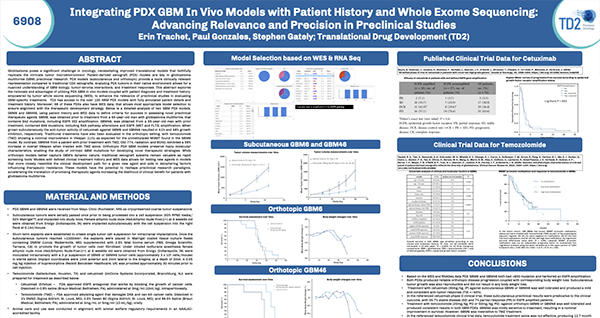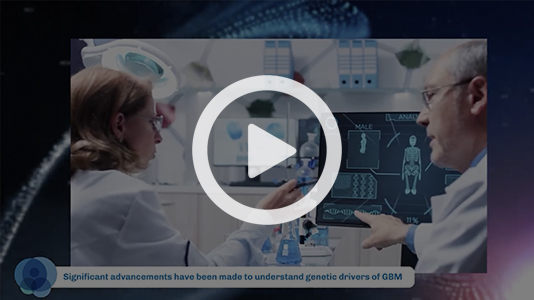Glioblastoma Patient Derived Xenograft (PDX) Models
Glioblastoma (GBM) is the most common primary brain tumor. While many significant advances have been made understanding key genetic drivers of the disease, glioblastoma remains lethal with a 5-year survival of only 6.8%. Many factors contribute to the low survival rate- principal amongst them is a lack of relevant preclinical models. TD2 has partnered with the Mayo Clinic to offer its drug development partners access to 108 well characterized glioblastoma PDX mouse models. The PDX models recapitulate key genomic aspects of GBM including EGFR alterations, TERT promoter mutations, and CDKN2A deletions.

Features include:
- MOA-Based Filters using selections driven by your drug’s specific mechanism of action and subsequent interrogation
- Diverse tissue types including fixed tissue for analysis of novel markers
- Assessment of tumor progression as single agents and in combination with standard therapies via orthotopic primary tumor models
- Well-established protocols that ensure an extremely high post-surgery survival rate
- Data-rich and highly characterized models with standard of care
Learn more about our Glioblastoma capabilities.
Contact our experts to help advance your Glioblastoma drug development program with our specialized models and preclinical services.
Patient Population
Figure 1. PDX tumor models patient characterization

Genomic Characterization
Figure 2. Available genomic data for PDX models (WES,
RNAseq, Methylation

Standard Therapy Response
TD2 has established baseline Standard of Care (Temozolomide,
Radiation) responses in several PDX models.
Figure 3. Survival of orthotopic intracranial GBM 39 (EGFRvIII
deletion) in response to Temozolomide dosed QD x 21

Figure 4. Survival of orthotopic intracranial GBM 28 in response to radiation dosed 2Gy QD x 5 and Temozolomide dosed QD x 4 x 4.

Summary of Key Models Available:
For additional data on full list of models Click Here
| WES | RNAseq | Methylation | EGFR Exon Variant | PDX Treatment | |
|---|---|---|---|---|---|
| GBM5 | |||||
| GBM6 | EGFRvIII | ||||
| GBM10 | |||||
| GBM12 | |||||
| GBM14 | |||||
| GBM22 | |||||
| GBM26 | |||||
| GBM28 | |||||
| GBM38 | |||||
| GBM39 | EGFRvIII | ||||
| GBM43 | |||||
| GBM44 | |||||
| GBM46 | Del. exons 13-14 | ||||
| GBM59 | EGFRvIII | ||||
| GBM64 | |||||
| GBM66 | |||||
| GBM75 | EGFRvIII | ||||
| GBM76 | EGFRvIII | ||||
| GBM79 | |||||
| GBM84 | |||||
| GBM85 | |||||
| GBM91 | |||||
| GBM102 | |||||
| GBM123 | Del. exons 13-14 | ||||
| GBM129 | |||||
| GBM134 | |||||
| GBM148 | |||||
| GBM150 | |||||
| GBM196 |

Comprehensive Preclinical Services
Regardless of the development question, TD2 has the specialized model you need to move your drug forward. Clients have access to humanized models, induction models, as well as specialty surgical and orthotopic models. We specialize in all areas of oncology and work diligently to understand your therapeutics’ mechanism of action. We match that with clinical development strategies for an efficient path forward.
- Non-GLP Safety/Tolerability
- In vitro Pharmacology Assays
- DMPK/ADME
- Orthotopic Tumor Models
- CAR-T and Adoptive Cell Therapy models
- Syngeneic mouse models
- In vivo Optical Imaging
- Humanized Mouse Models
- Diet-Induced Obesity Tumor Model
- Metabolomics and Proteomics Analysis
- Flow Cytometry
Additional Resources
Preclinical, Posters and Publications
Integrating PDX GBM In Vivo Models with Patient History and Whole Exome Sequencing: Advancing Relevance and Precision in Preclinical Studies
Videos
Glioblastoma Capabilities
GET STARTED
Work with a team who believes in your research as much as you do.
Are you ready to start your preclinical Glioblastoma studies? Partner with a collaborative oncology CRO that believes in your treatment as much as you do. Take the first step today and contact our experts.





